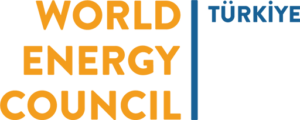 After experiencing a period of unusual predictability and calm throughout 2017 and the first half of 2018, the global oil markets are once again becoming increasingly unstable and volatile. What I’ve always called the “fear premium” in crude prices has steadily risen in recent weeks thanks to the convergence of a series of international events, resulting in a 12 percent rise in crude prices in recent trading days.
After experiencing a period of unusual predictability and calm throughout 2017 and the first half of 2018, the global oil markets are once again becoming increasingly unstable and volatile. What I’ve always called the “fear premium” in crude prices has steadily risen in recent weeks thanks to the convergence of a series of international events, resulting in a 12 percent rise in crude prices in recent trading days.
Here are some of the reasons why the “fear premium” is making this comeback:
-OPEC and Russia failed to act – Following their recent meeting in Vienna on June 22, the parties to the OPEC/non-OPEC agreement to limit exports issued a statement that was somewhat misleading, initially creating an impression that the various nations had agree to “add” as much as 800,000 barrels of oil per day (bopd) to the global market. But a reading of the fine print revealed that the parties had actually only agreed to restore their collective exports to the full quotas contained in the original agreement after those quotas had been significantly under-shot during April and May. Thus, while exports among these countries did rise by 680,000 bopd in June over May levels, the overall global market remained under-supplied thanks to strong demand for crude.
-Venezuela continues its slow-motion collapse – Venezuela, as recently as 2012 an exporter of more than 3,000,000 bopd, is now exporting less than half that amount as its economy continues its collapse. Some experts expect the formerly vibrant nation’s exports to decline by an addition 500,000 bopd by the end of 2018.
-Libya declared force majeure – Due to ongoing civil strife created by the country’s two competing regimes, most exports from Libya were shut in on July 1, and remain so as of this writing. The country’s National Oil Corporation said that all exports from have been suspended from the terminals of Al-Hariga and Zweitina, forcing the closure of all production from the oil crescent in northeast Libya. The result has been the removal of as much as 850,000 bopd from the global crude market.
-The return of U.S. sanctions creates uncertainty about Iranian export levels – Companies and other countries find themselves under increasing pressure to halt exports of Iranian crude in the wake of the U.S. cancellation of its participation in the Obama-era deal with Iran. The rising uncertainty over Iranian supply levels is resulting in similarly-rising market volatility.
-Iran threatens to close the Straits of Hormuz – In response to the Trump Administration’s re-imposition of sanctions, Iranian President Hassan Rouhani threatened to block the Straits of Hormuz in a July 2 speech in Bern Switzerland . Given that most crude exports from the Middle East must pass through the Straits, such threats inevitably result in increased market volatility.
-Doubts about the level of excess Saudi supply capacity persist – The rise in crude prices was temporarily interrupted on Monday in the wake of the joint announcements by President Trump and Saudi King Salman that Saudi Arabia was prepared, at the President’s urging, to increase its own exports by up to 2 million barrels per day if crude prices continue to rise to undesired levels. There is no doubt that the Saudi Kingdom does have excess production capacity, but some experts are skeptical that they could quickly add quite this many barrels to the open market. Russia and the United Arab Emirates also claim to possess spare capacity, but the extent of those volumes also remains open to question.
-U.S. shale can’t make up the difference. – U.S. shale production continues to expand, but even that factor promises to be minimized in the coming few months to to growing constraints in pipeline takeaway capacity in the Permian Basin, which threaten to place a hard cap on that region’s oil boom for the next year or so
Taken together, all these factors and events combine to create inexorable upwards inertia on global crude prices. Saudi Arabia’s promise to add significant new supply to the market could relieve that pressure in part or even entirely. But if it turns out that the Kingdom really doesn’t possess the huge spare capacity it publicly claims, then those wild projections from a couple of months ago of a return to $100 oil could suddenly find themselves having some basis in reality.
